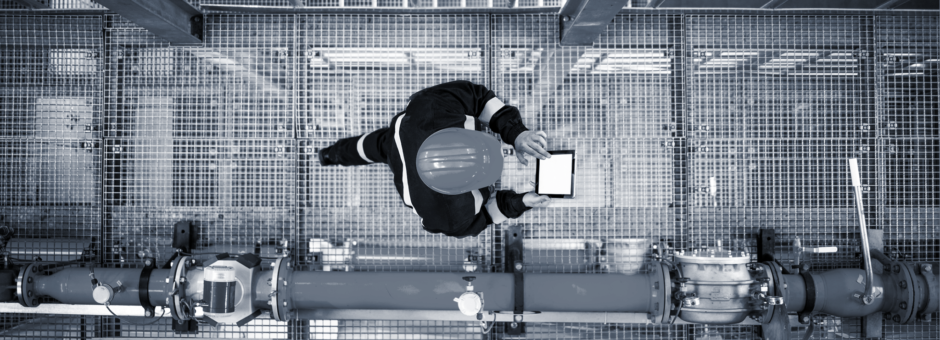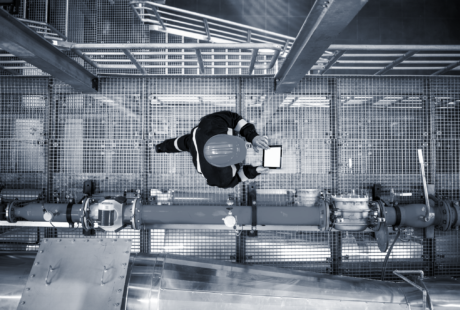Related:
AI, Tech, and the Future of Chemical Manufacturing
The manufacturing industry, a pivotal player in the global economy, is undergoing a profound transformation, moving away from the traditional linear model towards a circular economy. This shift, driven by environmental and economic imperatives, represents a strategic move towards sustainability and efficiency. In this detailed exploration, we delve into the circular economy’s core principles, innovative practices, and the broad spectrum of benefits they bring to the manufacturing sector.
Traditional Manufacturing and Its Limitations
Historically, the manufacturing sector has followed a linear model of operation, characterized by the ‘take-make-waste’ approach. This involves extracting resources, utilizing them, and then discarding them as waste. Such a model has led to considerable environmental challenges, including resource depletion and inefficient waste management, making it increasingly untenable.
Circular Economy: A Sustainable Alternative
In response to these challenges, the circular economy presents a transformative solution. It advocates for a sustainable approach that minimizes waste and maximizes resource efficiency. The model emphasizes the extension of product lifecycles through recycling, repair, and reuse, thus promoting a closed-loop system that significantly reduces resource inputs and waste generation.
Foundational Principles of the Circular Economy
Central to the circular economy are three principles: reduce, recycle, and reuse. These principles aim to minimize environmental footprints by reducing resource usage, recycling materials at their life’s end, and reusing components. Embracing these principles is essential for sustainable manufacturing, contributing to a healthier global ecosystem.
Innovations in Circular Manufacturing
Refurbishment and Reuse: IKEA1 and Apple2 exemplify companies that have integrated refurbishment and reuse into their operations, significantly reducing resource needs and waste. In the fashion industry, companies like Patagonia3 repair and resell clothing, extending product life and minimizing waste.
Recycling Initiatives: The pharmaceutical industry’s recycling of active ingredients from unused medicines highlights the importance of recycling in circular manufacturing.
TerraCycle, a US-based recycling company, has also made strides in recycling hard-to-recycle materials. The company has established various programs across the U.S., allowing communities to collect and recycle items such as chip bags, toothpaste tubes, GLAD wrap products, cosmetic containers, and even plastic coffee pods.4
Energy Recovery: McDonald’s5 in France’s production of biofuel from waste products demonstrates a sustainable approach to energy recovery when reuse or recycling is not feasible.
The cement industry uses waste as a fuel source for kilns, reducing fossil fuel dependence.
Resource Sharing: Car-sharing services exemplify resource sharing, reducing the need for individual vehicle ownership and, consequently, manufacturing demand.
Remanufacturing: Companies like Caterpillar6 and Xerox7 lead in remanufacturing, restoring used products to like-new conditions, which conserves resources and energy.
Eco-friendly Design: Emphasizing eco-friendly design in new products can significantly reduce environmental impact. For example, the use of biodegradable materials and modular designs that allow for easy disassembly and recycling.
Supply Chain Collaboration: Joint efforts in supply chain management can optimize resource use and create synergies. For instance, collaborations between manufacturers and suppliers can lead to shared recycling facilities or joint waste management strategies.
The Wide-Ranging Benefits of Circular Manufacturing
The shift to a circular economy in manufacturing offers numerous benefits:
Reduced Environmental Impact: It significantly lowers waste production and promotes sustainable resource use.
Economic Gains: Circular practices can lead to cost savings and open new market opportunities.
Brand Reputation: As environmental consciousness rises, companies that adopt circular practices gain in brand value and customer loyalty.
Navigating the Transition Challenges
However, the transition to a circular economy model involves overcoming several challenges:
Technological Investment: Manufacturers must invest in new technologies and processes tailored to circular practices.
Supply Chain Rework: Adjusting supply chains to fit recycling, refurbishment, and remanufacturing is key.
Consumer Behavior Modification: Changing consumer behavior to support circular economy initiatives is essential for their success.
Conclusion: Charting a Sustainable Course in Manufacturing
The move towards a circular economy in manufacturing is a crucial step toward a sustainable and economically viable future. By embracing innovative practices that align with the principles of reduce, recycle, and reuse, the manufacturing sector is not only paving the way for sustainable growth but also setting an example for other industries.
This transition demonstrates the possibility of harmonizing economic growth with environmental stewardship, offering a model for sustainable industrial development. As we face increasing environmental challenges, the circular economy stands as a testament to the potential of innovative, sustainable practices in reshaping the future of manufacturing and leading us toward a greener, more sustainable world.
The Circular Economy at Work in Canada
In Canada, several manufacturing companies are embracing the circular economy model, demonstrating innovative approaches to sustainability and resource efficiency.
The Beer Store: Operating in Ontario, The Beer Store employs a circular reuse program where beer bottles are reused multiple times before being recycled into new bottles. The company has achieved a remarkable recovery rate of refillable bottles, and its efforts have significantly reduced carbon dioxide emissions annually.8
Clementine Greetings: This company offers an innovative approach to greeting cards, aiming to keep them in circulation and out of landfills. They use removable message sheets in their greeting cards, allowing the cards to be reused multiple times. Clementine Greetings ensures all materials used are recyclable, aligning with circular economy principles.8
The Grocery Outlet: Founded in Whitby, this company combats food waste by distributing products that are deemed imperfect due to cosmetic flaws, excess supply, or packaging changes. By doing so, The Grocery Outlet addresses a critical aspect of waste in the food distribution chain while offering cost savings to consumers.8
The Green Jar: Located in Toronto, this business promotes a low-waste, eco-friendly lifestyle. They offer a package-free refillery for personal care and household products, encouraging consumers to bring their own containers. The Green Jar also acts as a community hub for recycling various materials, including textiles and single-use plastic containers.8
Nurse Scrap Metal: Operating in Peterborough, Ontario, this company plays a vital role in recycling scrap metal for use in medical and food grade manufacturing equipment. By diverting waste from landfills since 1956, Nurse Scrap Metal ensures a steady supply of essential materials like stainless steel and aluminum for these industries.8
Cited Sources
1 “IKEA’s Recycling & Buyback Programs (10 Essential Facts).” comfort beyond. Accessed February 7, 2024. https://comfortbeyond.com/ikea-recycling-program/.
2 Ivanov, Dzhoro. “More Sustainability, Less Waste: 20% of Materials Used by Apple Are Recycled.” PhoneArena, April 20, 2022. https://www.phonearena.com/news/More-sustainability-less-waste-20-of-materials-used-by-Apple-are-recycled_id139742.
3 “Does Patagonia Have a Recycling Program? A Step toward a Greener Future.” The Stock Dork Stock Ideas, Penny Stocks, Product Reviews, February 7, 2024. https://www.thestockdork.com/does-patagonia-have-a-recycling-program/.
4 Equipment, Eco Green. “The Ins and Outs of Mandatory Recycling in the United States.” Eco Green Equipment | Tire Shredders, January 12, 2024. https://ecogreenequipment.com/the-ins-and-outs-of-mandatory-recycling-in-the-united-states/#2_TerraCycle.
5 “Oil from McDonald’s French Fries to Be Converted into Renewable Diesel.” Biofuels International, June 24, 2020. https://biofuels-news.com/news/oil-from-mcdonalds-french-fries-to-be-converted-into-renewable-diesel/.
6 “Caterpillar’s Circular Economy.” https://www.caterpillar.com/en/company/sustainability/remanufacturing.html. Accessed February 7, 2024. https://www.caterpillar.com/en/company/sustainability/remanufacturing.html.
7 “The Circular Economy in Our Manufacturing 2018 – Xerox.” Xerox Corporate Social Responsibility Report. Accessed February 7, 2024. https://www.xerox.com/corporate-social-responsibility/2018/environment/circular-economy.html.8 Hardcastle, Alannah. “5 Circular Economy Companies in Canada to Celebrate Waste Reduction Week.” Random Acts Of Green, October 4, 2023. https://raog.ca/circular-economy-companies-in-canada/.
8 Hardcastle, Alannah. “5 Circular Economy Companies in Canada to Celebrate Waste Reduction Week.” Random Acts Of Green, October 4, 2023. https://raog.ca/circular-economy-companies-in-canada/.




